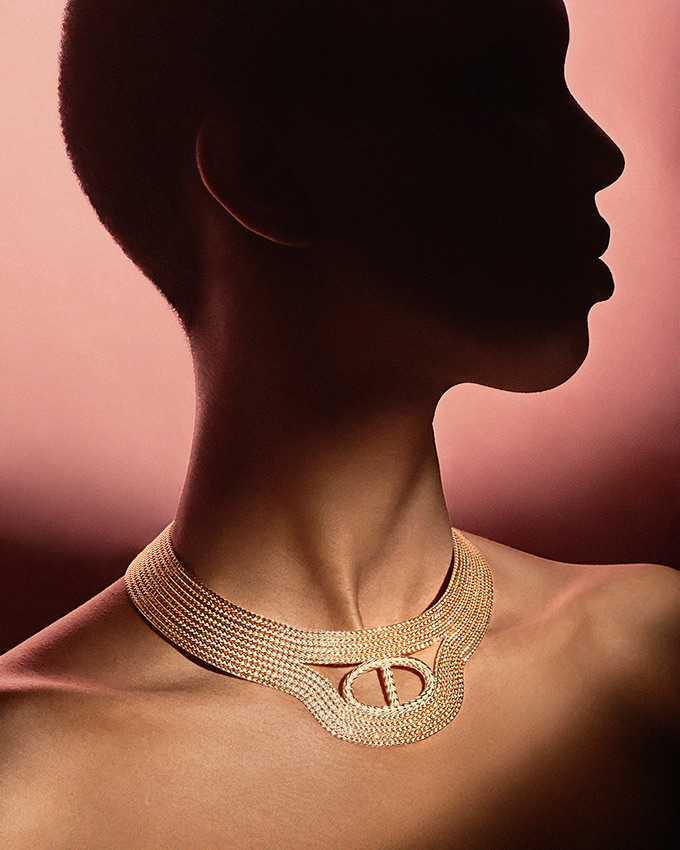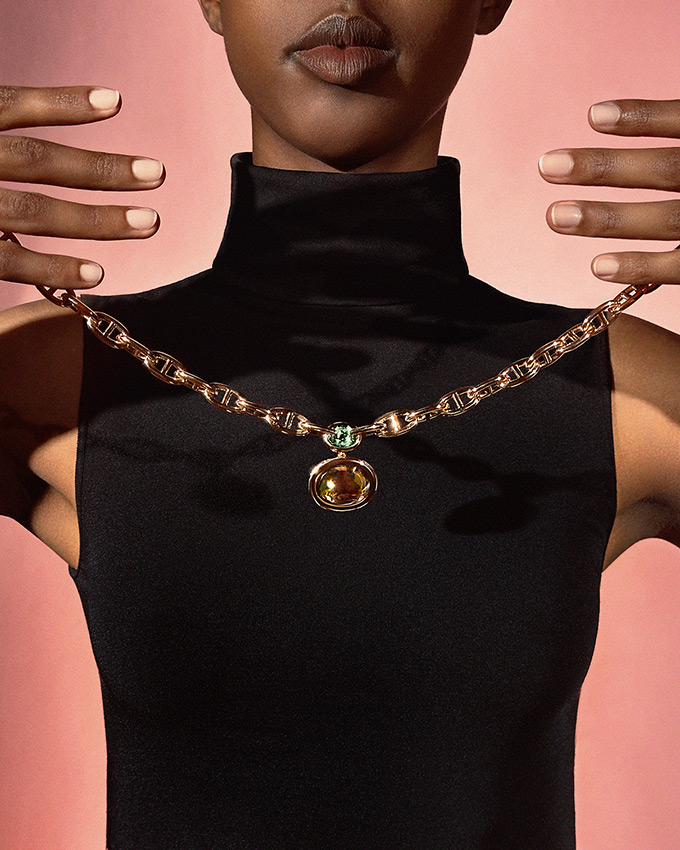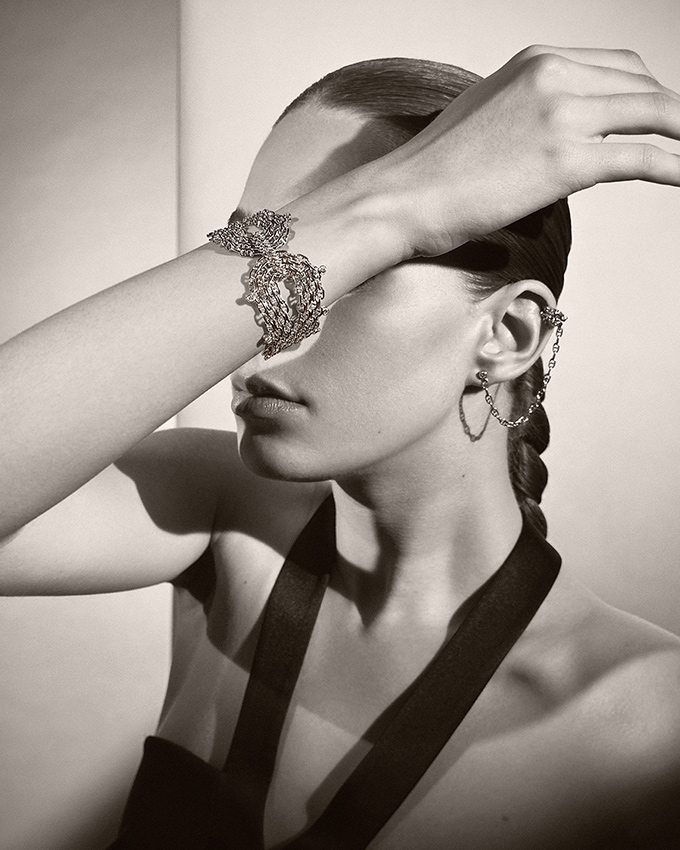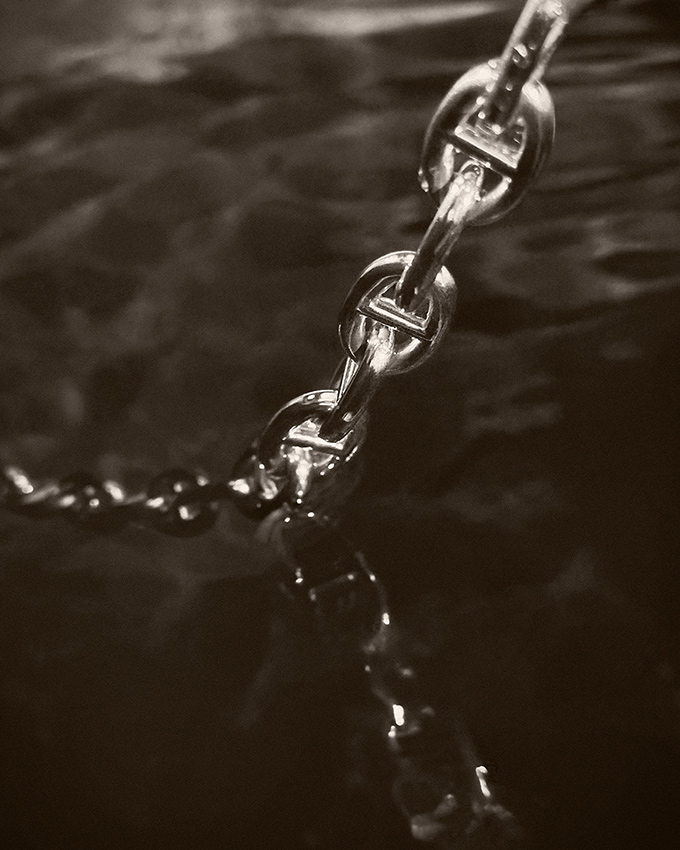The house of Hermès is chock full of symbols and icons. Its leather bags are legendary, as are its silk scarves. Makeup is on the rise too, much like its inventive timepieces. But what really sets this paragon of French luxury apart from many other brands is an incredibly vast lexicon of design motifs that carry through from one category to the next, inspiring the creative directors, designers and craftsmen of each metier. One such icon is the house’s Chaine d’Ancre, its nautical-inspired chain motif that has graced nearly every metier.
The Chaine d’Ancre itself is a simple design. A softly rounded oval, bisected by a line in the middle. It was first conceived in 1937 when Robert Dumas, a first generation of Dumas-es to take over from the Hermès family, was watching boats moored along the Normandy coast. The form of the boats’ anchor chains so inspired him that he took sketches to the house’s silversmiths, and a year later fashioned a silver bracelet from it.

Sometimes the simplest forms can prove wellsprings of inspiration. The Chaine d’Ancre motif has been in place for well over 80 years at Hermès now, and there’s still room to toy with it. It’s proven a font of creativity for Pierre Hardy, the house’s creative director of jewellery, who has come up with a new collection this year that’s full of twists and turns on the chain.

“Accumulating, merging and fluidifying, I explored several territories starting with the archetypal form,” Hardy explains in press notes. That archetypal form is perhaps most obvious in designs like the Chaine d’ancre Multichaînes necklace and bracelet, which makes a bold statement from something as simple as tweaking the scale of the motifs. Hardy designed multi-strung bands of chains that create a textured, varied effect. There’s also the Chaine d’ancre Danaé necklace, which isolates a single link and glorifies it as a design centrepiece unto itself.


Hardy’s also introduced high degrees of preciousness to a motif that originally started life as a silver bracelet. A standout necklace in rose gold, for example, features a 4.63-carat oval-cut green tourmaline and a 46.55-carat cabochon-cut multi-coloured tourmaline—both in oval bezel settings that recall the shape of the motif’s links. Similarly decked are two Chaine d’ancre necklaces that affix their centre stones—a 14.97-carat cushion-cut orange sapphire on one, and a 2-carat oval-cut diamond on the other—near the toggle clasp, all of it set with thousands of diamonds to imbue the ostensibly functional nautical chain with luxury enough to turn it into a precious object.
This way of toying with the chain’s forms and functions is another way that Hardy has introduced freshness to the range. Collection notes describe the concept as a “twisted object”, to which you could look to the Chaine d’ancre Punk pieces for examples. The oval chain motif is stretched, almost to the proportions of a safety pin, and turned into double rings that are worn on two (or even three) fingers. The pieces this year come in rose gold, with the options of diamonds or black spinels.



It’s a fun way to wear an archetypal piece, which was also perhaps the thought behind the Chaine d’ancre Calypso single earring, in which a stud worn on the lobe is attached with a chain to a ear cuff. The line is accompanied by another great example of shifted forms. A yellow gold Calypso bracelet, set with 59 diamonds, recreates the nautical link design in macro from smaller concentric bands of actual Chaine d’ancre chains.


But the designs that are most imaginatively untethered from the chain’s starting point are perhaps the Sacs bijoux. Like the Kellymorphose collection before it, these pieces fold in the iconography of the house’s famous handbags. Imagine, if you will, a very long strand of Chaine d’ancre links. Now imagine that chain wrapped around itself, forming a dense weave and cage, until a minaudière of sorts is formed, with dangling strings of links that act as both decoration and actual ‘handles’ that allow one to wear these pieces around the neck or on the wrist. It’s an audacious design statement from Hardy, and these bags—especially in the case of a white gold version set with 11,668 diamonds totalling 99.07-carats—positively drip with bling.

So there’s lots of versions of the Chaine d’ancre. But as a cult object, there is still something cool and subversive about the original: a single fluid chain of rounded, medium-sized links, with an open toggle clasp at the end. Unadorned, and designed to simply demonstrate the chain smithing skills of the house. And the good news is that Hermès does indeed continue to produce and offer the bracelet in sterling silver—the very form that it first took all those years ago.





